Discovering Eritrea’s and Ethiopia’s Flavorful National Dish
Eritrean and Ethiopian cuisine is a treasure trove of vibrant flavors, rich traditions, and communal dining experiences. Among its many dishes, Tsebhi Derho (ጸብሒ ደርሆ in Tigrigna) and Doro Wat (ዶሮ ወጥ in Amharic) stands out as a quintessential representation of the countries’ culinary artistry. Often referred to as the national dish, Tsebhi Derho/Doro Wat is a spicy chicken stew that embodies the heart and soul of Eritrean and Ethiopian culture. In this blog post, we’ll delve into the ingredients and preparation of this iconic dish, inviting you to experience a taste of Eritrea and Ethiopia in your own kitchen.
The Essence of Tsebhi Derho/Doro Wat/Chicken Stew
At its core, Tsebhi Derho/Doro Wat is a spicy chicken stew, but its preparation and the symphony of flavors it delivers make it much more than that. The dish is characterized by its vibrant red hue and complex spice profile, primarily driven by Berbere, a quintessential Ethiopian spice blend. The preparation of Tsebhi Derho/Doro Wat is an art, often involving hours of slow cooking to allow the flavors to meld together perfectly.
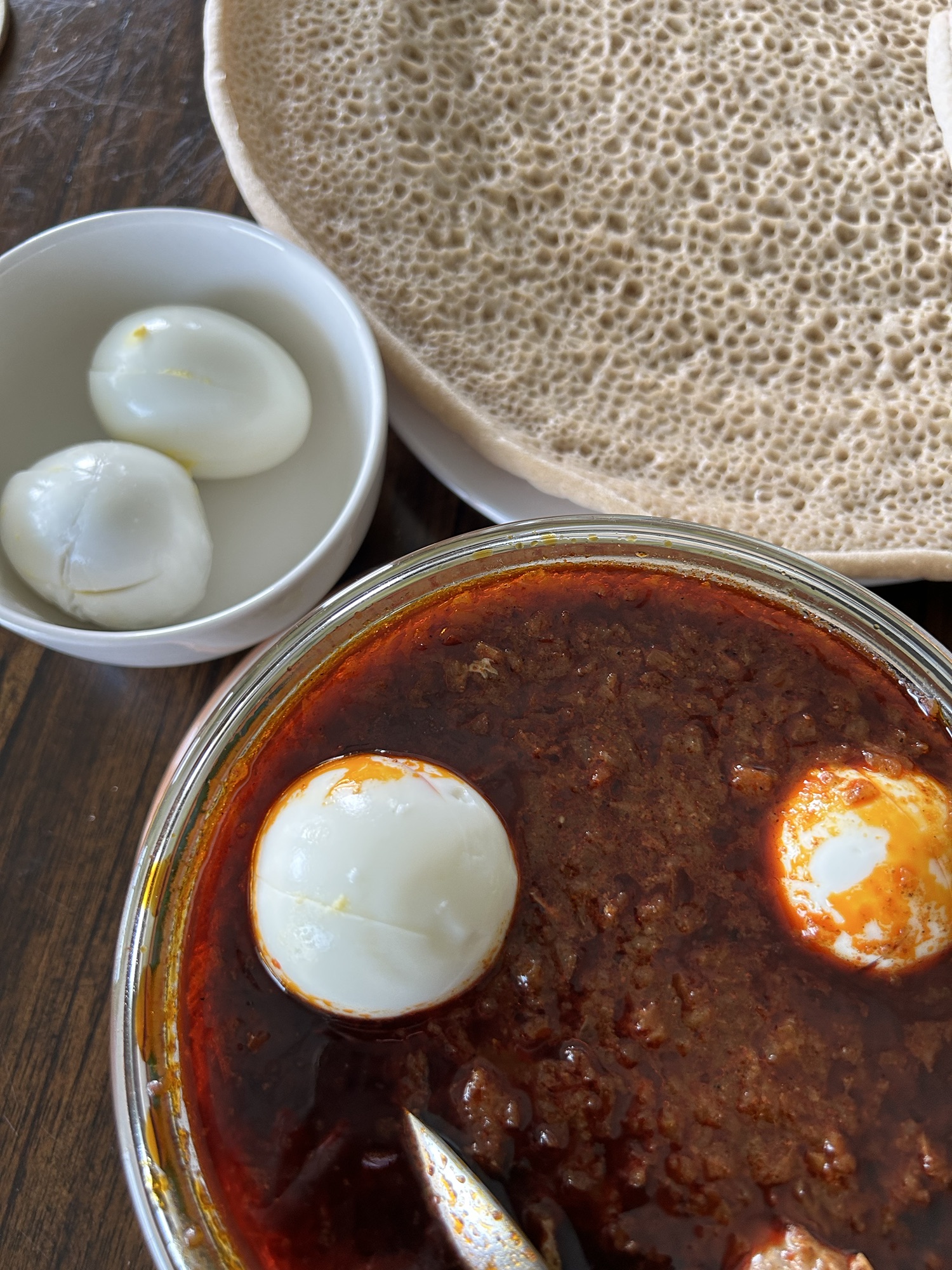
Reminscing
Growing up, seeing a chicken in our compound meant a holiday was coming up or a very respected guest was invited for a meal. It is common that a male should slaughter the chicken. A lot of times our family would call a male child from the neighborhood and then placed in a large basin. The next step is pouring hot water on the body of the lifeless chicken. This is done in order to easily and quickly pluck the feathers while the water is steaming hot. You can change hot water as much as you need, but usually within the third time, the feathers are all gone and you’re mostly plucking cleaning the chicken. Truth be told the smell of feathers and dirt in the steam is quite unpleasant.
After plucking, the chicken needs to be inflated by blowing air through the neck to separate the skin from the meat. Sometimes people use a straw or the outer casing from a Bic ball pen, but most commonly you just inflate it with your mouth as if you’re inflating a balloon. My mother was showing one of my sisters how to cut the chicken. When my mom told her to inflate the chicken, my sister was so disgusted with the idea that she got up and told my mother to just call her when the chicken is ready and she’d never learn how to cut it.
Next, the neck needs to be tied carefully to prevent air from escaping. Hold the inflated chicken over a fire flame to remove any leftover hair or feathers. Now the final step in preparing your chicken is to carefully cut the chicken open into 12 pieces: wings (tip and flat wingette), breasts with drumettes, neck, thighs, drumsticks, back (feresegna), skin, and stomach (without internal parts). In Eritrean and Ethiopian cooking, chicken feet and head are not commonly used.
Here in the States, I get my poultry from a farm. A young rooster is a perfect choice for Tsebhi Derho/Doro Wat because they are young, with minimal fat and soft meat.

Key Ingredients
- Chicken: Traditionally, Tsebhi Derho/Doro Wat is made with a whole chicken cut into twelve pieces including legs, thighs, wings, and breast.
- Berbere: This is the heart and soul of Tsebhi Derho/Doro Wat. Berbere is a spice mix that typically includes chili peppers, garlic, ginger, basil, and fenugreek, among other spices. It provides the dish with its signature heat and complexity.
- Cooking Oil/Te’smi/Niter Kibbeh: For richer flavor, it’s recommended to use spiced clarified butter, another cornerstone of Eritrean and Ethiopian cooking. Infused with herbs and spices such as garlic, ginger, and cumin, Te’smi/Niter Kibbeh imparts a rich, aromatic quality to the stew.
- Yellow Onions: A substantial amount of finely chopped onions forms the base of the stew, cooked slowly until deeply caramelized, which adds sweetness and depth to the dish.
- Tomatoes: These enhance the flavor of the Berbere and make it milder and cooler to the taste.
- Garlic and Ginger: These aromatics are essential in enhancing the flavor profile of Tsebhi Derho/Doro Wat.
- Hard-Boiled Eggs: Often added towards the end of cooking, the eggs absorb the stew’s flavors and provide a satisfying texture contrast.
- Injera: Injera is a traditional Eritrean and Ethiopian sourdough flatbread made from teff flour, known for its unique spongy texture and tangy flavor, and is often used as a base for serving various stews and dishes.
Ingredients
- 1 whole chicken, cut into 12 pieces
- 1 lemon, juiced and cut in half
- 6 large yellow onions, finely chopped
- 1 large/2 medium tomatoes, chopped
- 1/4 cup avocado oil or 1/4 cup Te’smi/Niter Kibbeh (spiced clarified butter)
- 5 cloves garlic, minced
- 2 tablespoons fresh ginger, minced
- 1/4 cup Berbere spice mix
- 2 cups water
- 12 hard-boiled eggs, peeled (detailed below)
- Salt to taste
Steps
The preparation of Tsebhi Derho/Doro Wat is a labor of love. Here’s a step-by-step overview to guide you through the process:
Step 1: Marinate the Chicken
In a large container with a lid, begin by marinating the chicken pieces in water, lemon juice, and salt. This step tenderizes the meat and adds a subtle tangy flavor. Leave it on the counter during cooler weather or in the refrigerator until ready to use.

Step 2: Caramelize the Onions
In a large pot, cook the finely chopped onions with salt to taste over medium heat. Stir continuously until they turn a deep brown color. This step is crucial as it forms the flavor base of the stew.
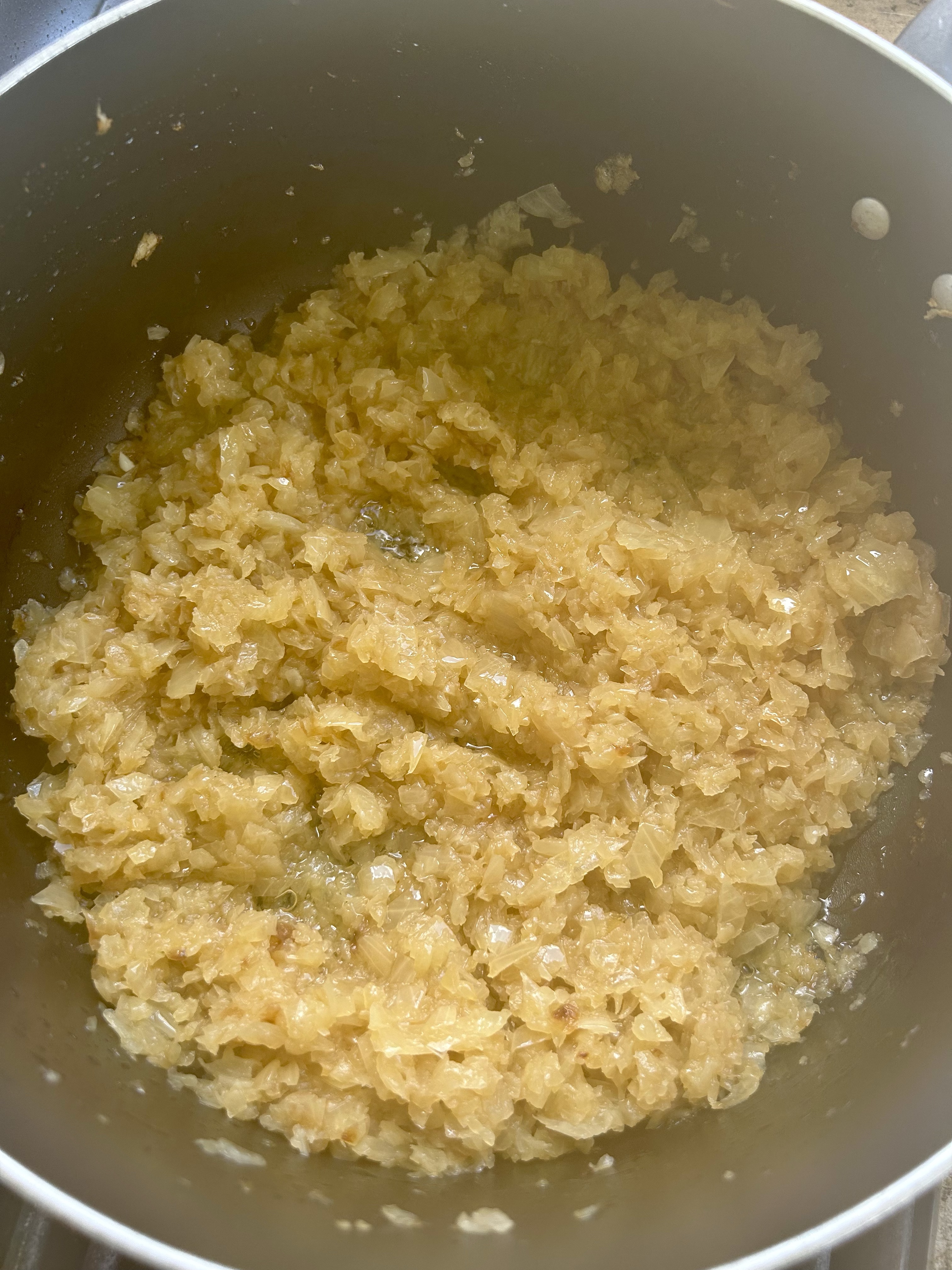
Step 3: Add Minced Garlic, Ginger, and Oil/Te’smi/Niter Kibbeh
Once the onions are caramelized, add the minced garlic, ginger, and oil. Cook for a few minutes to release their aromas and allow the spices to bloom. If using Te’smi/Niter Kibbeh (spiced butter), you’ll notice that the butter adds richness and a distinctive flavor to the stew.
Step 4: Add Berbere and Tomatoes
Add Berbere and tomatoes to the pot. Stir to combine. Let it simmer for a while, stirring occasionally.
Step 5: Simmer the Chicken
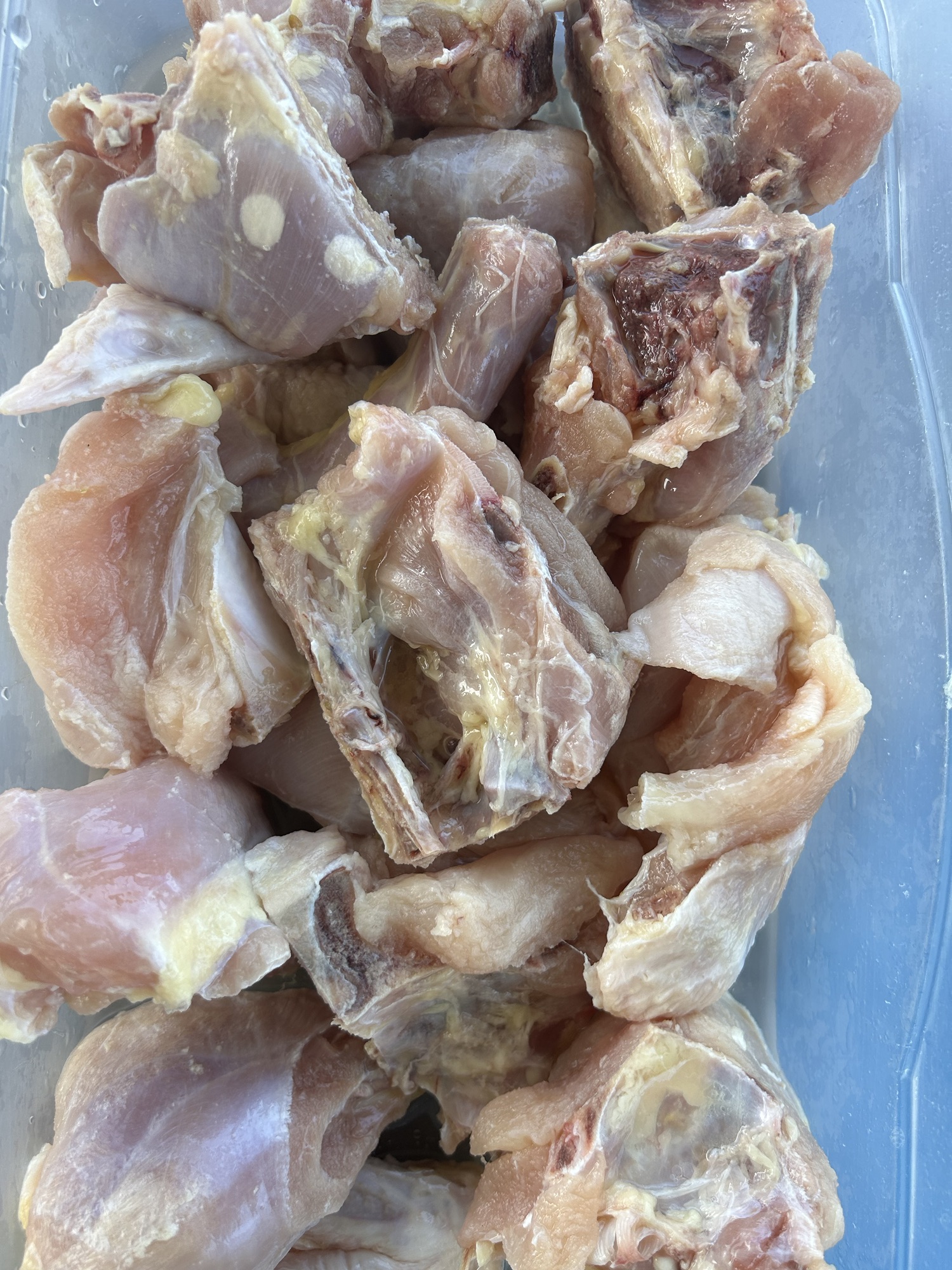
Add the marinated chicken pieces to the pot, stirring occasionally to coat them thoroughly with the onion and spice mixture. Pour in 2 cups of water (enough to cover the chicken) and bring the mixture to a simmer. Cook slowly, allowing the flavors to meld and the chicken to become tender. (Chicken meat cooks quickly, especially if it’s a young rooster). Let it simmer for about half an hour. Check if the chicken is well done by tasting a piece. Turn off the stove and let your chicken stew cool down.
Step 6: Finish with Eggs
- Place the 12 eggs into a deep pot.
- Fill the pot with water until the eggs are fully submerged.
- Add a teaspoon of salt and bring it to boil over medium heat (approximately 15 minutes).
- Fill a deep bowl with cold water and carefully remove the eggs from the hot water, placing them in the cold water bowl.
- After they cool down, peel the eggs. Rinse the hard-boiled eggs and place them on a clean plate.
- Using a knife, make four light slices (not deep cuts) on each hard-boiled egg. Place the hard-boiled eggs in the chicken stew (optional)1. This helps to absorb the flavors of the chicken stew.

Serving Tsebhi Derho/Doro Wat/Chicken Stew
Tsebhi Derho/Doro Wat/Chicken Stew is traditionally served with Injera. The flatbread is spread out on a large plate, with the stew spooned on top. Diners use pieces of Injera to scoop up the stew, enjoying the combination of textures and flavors. The tangy, slightly sour taste of Injera perfectly balances the rich, spicy stew.
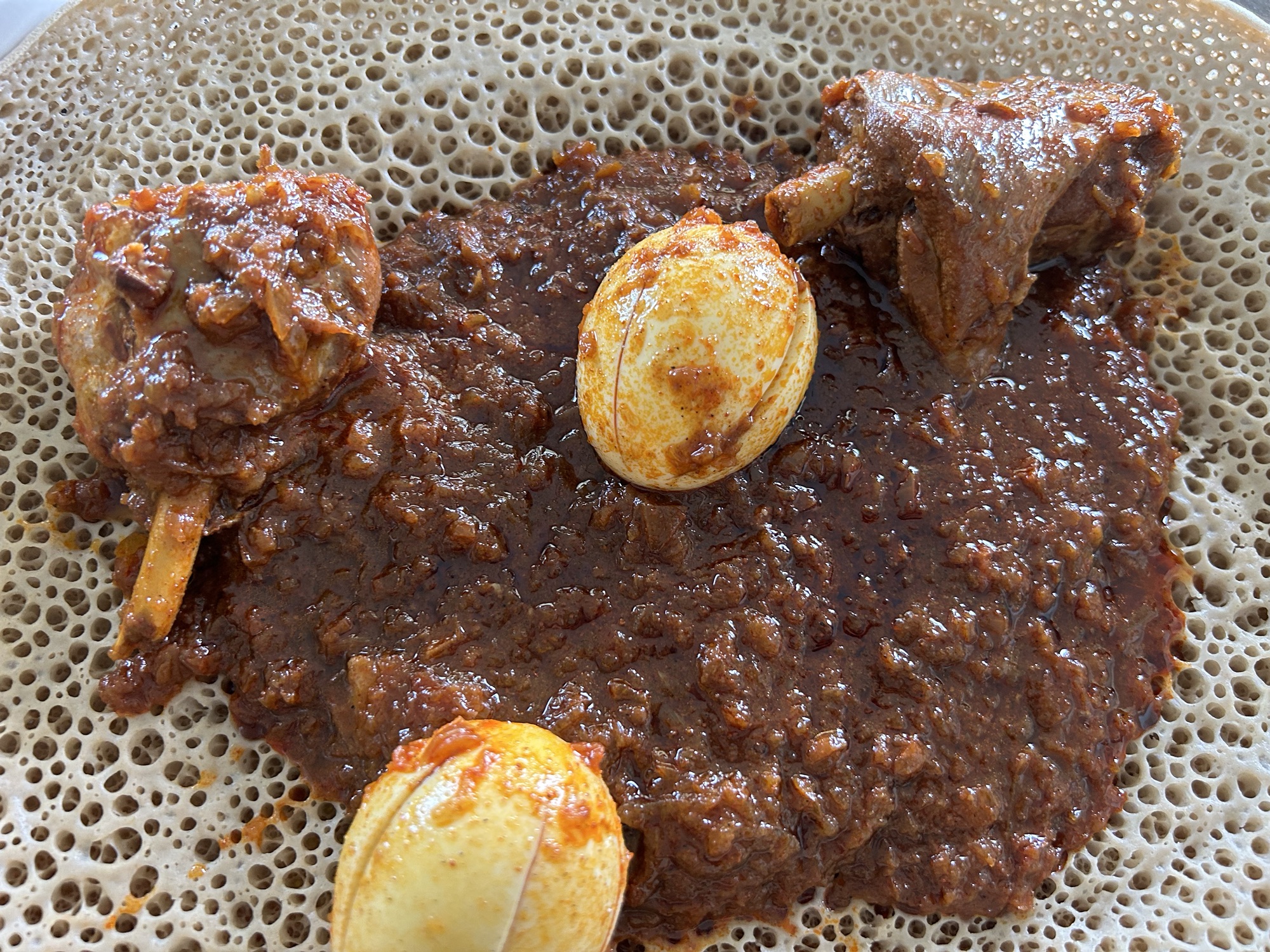
Bringing Eritrean and Ethiopian Cuisine to Your Kitchen
While preparing Tsebhi Derho/Doro Wat/Chicken Stew can be time-intensive, the result is well worth the effort. This dish is a celebration of flavors and a testament to the rich culinary heritage of Eritrea and Ethiopia. Whether you’re exploring Eritrean and Ethiopian cuisine for the first time or looking to recreate a beloved dish, Tsebhi Derho/Doro Wat/Chicken Stew offers a delicious and authentic experience.
So, gather your ingredients, embrace the slow cooking process, and invite friends or family to share in the joy of a communal Eritrean and Ethiopian meal. Tsebhi Derho/Doro Wat/Chicken Stew is more than just a dish; it’s an invitation to savor the warmth and hospitality of Eritrean and Ethiopian culture. Enjoy the journey of cooking and, most importantly, the feast that follows!
- Optional if there is a food allergy in the household. Instead of placing them in the pot, you can place one on your side when eating from a communal plate which is a common practice. ↩︎
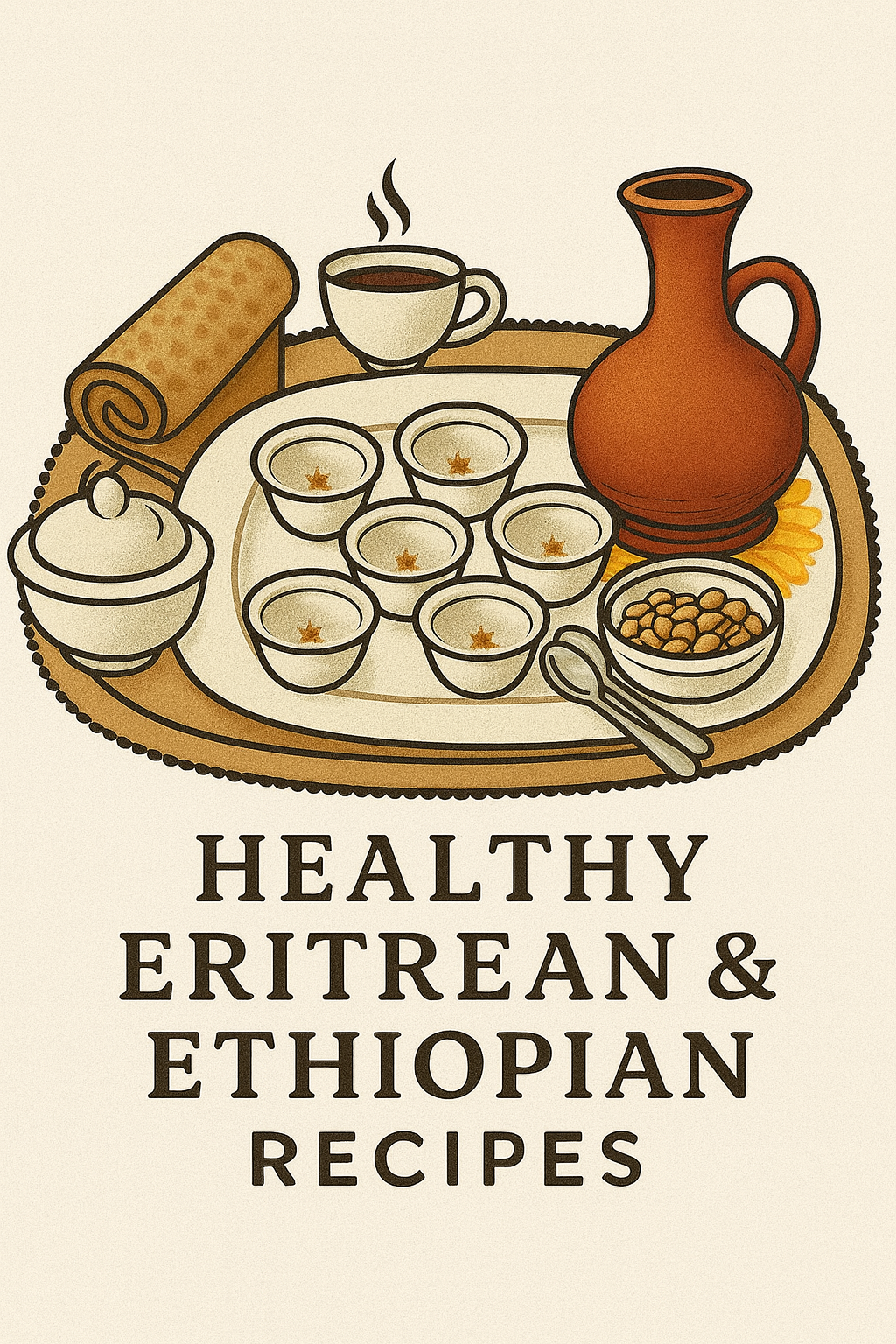

Leave a Reply